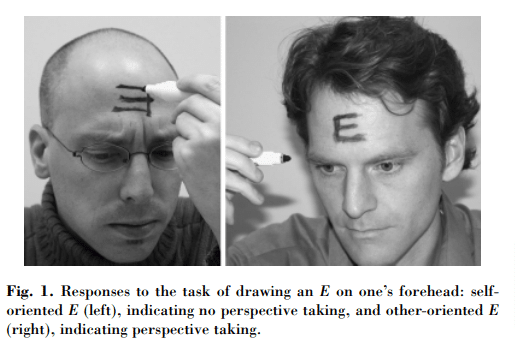
The High and Mighty: How Status Hinders Leaders’ Understanding of Others
today2023.07.03. 625 5

WHY SHOULD YOU CARE?
Uncover the startling findings that reveal how power and status can hinder leaders’ ability to accurately gauge others’ emotions and perspectives, shedding light on the potential consequences for effective decision-making and team collaboration.
In the complex world of leadership, power, and empathy often appear to be at odds. Recent research utilizing the enigmatic “E Test” delves deep into this paradox, illuminating the fascinating interplay between perspective-taking, social cognition, and hierarchical status. Spearheaded by social psychologist Adam Galinsky and his colleagues at Northwestern University’s Kellogg School of Management, these studies have far-reaching implications for leadership in modern organizations.
The “E Test,” also known as the “Reading the Mind in the Eyes Test,” is a lens through which researchers can gauge an individual’s empathic accuracy and capacity for understanding others’ emotions and perspectives. By analyzing photographs of people’s eyes, participants are challenged to decipher the emotions and mental states behind those eyes, without the aid of additional contextual cues.

Galinsky’s team leveraged this innovative test to shed light on the impact of power and status on perspective-taking. Surprisingly, their findings suggest that the higher an individual’s position of power, the less accurate they tend to be in empathizing with others,. As the authors noted: “we found that power was associated with a reduced tendency to comprehend how other individuals see the world, think about the world, and feel about the world. Priming power led participants to be less likely to spontaneously adopt another person’s visual perspective, less likely to take into account that another person did not possess their privileged knowledge, and less accurate in detecting the emotional states of other people.”
This phenomenon can be partially attributed to a reduction in the need for social cooperation, leading high-power individuals to prioritize their own perspectives over those of others.
Intriguingly, the study also revealed that status plays a crucial role in shaping empathic accuracy. Individuals with higher status, regardless of their position of power, displayed a diminished ability to understand the emotions and viewpoints of their subordinates or peers. With greater access to resources and social support, high-status individuals appear less motivated to grasp the perspectives of others. As Galinsky put it: “A negative relationship between a measure of power and a measure of perspective taking, suggest that compared with low-power individuals high-power individuals are less focused on the meaningful psychological experiences of those around them.”
The implications of these findings for leadership in organizations are profound. Effective leaders must not only make strategic decisions and maintain control but also connect with their team members on an emotional and personal level.
Understanding employees’ perspectives fosters a sense of inclusivity, improves communication, and promotes psychological safety, hence a positive organizational culture.
The challenge lies in reconciling the inherent power dynamics within organizations with the need for empathetic leadership. Leaders who acknowledge the potential pitfalls of power may actively engage in perspective-taking exercises or training to enhance their empathic accuracy. By doing so, they can bridge the empathy gap, break down barriers, and strengthen their relationships with team members.
Furthermore, organizations must embrace a culture that values empathy as a critical leadership trait. Incorporating empathy-building programs into leadership development initiatives can empower future leaders to navigate the complexities of power while maintaining genuine connections with their colleagues.
It is also essential to be supportive of creating diverse and inclusive work environments that can counteract the dehumanization tendencies associated with power dynamics. By valuing and incorporating diverse perspectives, leaders can foster a culture of empathy, understanding, and collaboration.
Leadership teams should actively seek out individuals with different perspectives and backgrounds. Engaging with a variety of viewpoints challenges leaders’ preconceived notions and enhances their ability to empathize with diverse stakeholders.
However, it is equally vital to recognize the broader social context in which leadership exists. Systems that perpetuate hierarchical structures and prioritize individual success over collective well-being can exacerbate the power-empathy conundrum. Encouraging more participative and inclusive leadership styles, where perspectives from all levels are sought and respected, can be a transformative step toward fostering empathy within organizations.
As we embark on this journey to reconcile power and empathy in leadership, the “E Test” serves as an essential compass, guiding leaders towards a more empathetic and inclusive approach. Empathy is not a sign of weakness but rather a strength that empowers leaders to connect authentically, inspire trust, and create environments where innovation and collaboration can thrive.
In the ever-evolving landscape of business, the “E Test” challenges leaders to rise above the trappings of power and embrace empathy as a fundamental pillar of effective leadership. With empathy at the helm, organizations can foster a harmonious balance between power and perspective, steering toward a brighter and more compassionate future.

Written by: Mihaly Nagy
Employee Engagement Employee Experience Leadership psychological safety
Previous post

- 592
labelArticles today2023.06.23.
Unforeseen Turbulence: The Role of Culture in M&A – lessons from Siemens Energy’s Market Value Plunge
WHY SHOULD YOU CARE? Discover the story behind Siemens Energy’s recent market value plunge and turbine troubles. This article sheds light on the underestimated impact of culture in mergers, drawing [...]
Similar posts

labelArticles today2024.07.24.
AI-Powered HR: Strategic Benefits and Practical Applications

labelArticles today2024.06.24.








Post comments (0)